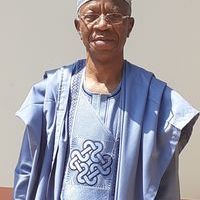Rural African farming has often been viewed as ephemeral shifting cultivation with low output and high unreliability. At the same time it is often understood as static and relatively unchanged for centuries. More recent historical and... more
Rural African farming has often been viewed as ephemeral shifting cultivation with low output and high unreliability. At the same time it is often understood as static and relatively unchanged for centuries. More recent historical and archaeological studies of African ‘intensive’ farming systems have challenged this narrative, yet detailed analyses of such systems and the potential to draw ‘lessons’ from them for the future remain under-developed and restricted to relatively few locations. This paper presents an overview of a new research network designed to share and generate novel in insights into African farming systems across the continent. The network links projects in Kenya (Marakwet), Nigeria (Tiv) and South Africa (Bokoni) in an attempt to develop comparative and panAfrican approaches, as well as building unique research capacity, experience, approaches and knowledge in Africa and for Africa. In the paper we introduce each of the partner projects and the specific interdiscip...
Research Interests:
Research Interests:
Research Interests:
Research Interests:
Nigeria, with over 200 million people, covers an area of 923,768 km2 and it occupies the eastern section of the West African region (Figure 1). The regions of Nigeria have prehistoric sites spanning from the Early Stone Age through the... more
Nigeria, with over 200 million people, covers an area of 923,768 km2 and it occupies the eastern section of the West African region (Figure 1). The regions of Nigeria have prehistoric sites spanning from the Early Stone Age through the Middle Stone Age, the Late Stone Age/Neolithic to the Iron Age and the beginning of urbanization. Several historic empires, states and polities developed within the geographical area now occupied by Nigeria and had left archaeological relics.
Research Interests:
... Abubakar Tafawa Balewa while introducing the Antiquities Bill in 1953 stated that, in contrast to what had been imported, ... of ditch and embank-ment, mounds, house remains, wells and other features spread over a wide area (see... more
... Abubakar Tafawa Balewa while introducing the Antiquities Bill in 1953 stated that, in contrast to what had been imported, ... of ditch and embank-ment, mounds, house remains, wells and other features spread over a wide area (see Folorunso and Olayinka 1997; Folorunso 2001). ...
Research Interests:
Research Interests:
Research Interests:
Cette recherche est destinee a demontrer la continuite du peuplement Tiv dans la vallee de Katsina-Ala. Nous etudions des habitations de plein air aux sommets de quelques montagnes dans cette vallee en vue de les comparer avec les... more
Cette recherche est destinee a demontrer la continuite du peuplement Tiv dans la vallee de Katsina-Ala. Nous etudions des habitations de plein air aux sommets de quelques montagnes dans cette vallee en vue de les comparer avec les habitations actuelles de la population Tiv. Nous presentons tous les sites archeologiques decouverts dans l'aire ou nous effectuons nos recherches. Ces sites sont de deux types: des abris sous roche et des etablissements de plein air aux sommets de montagnes. Nous nous interessons a des etablissements de plein air et nous avons releve les plans de quelques-uns. Les plans releves sont etudies en vue de les comparer avec des habitations actuelles du Tiv dont nous avons aussi releve des plans. L'indices de comparaison sont, les dimensions des huttes, les dispositions des huttes, en observant les distances entre des huttes. Cette comparaison nous permet de voir des similarites entre les habitations anciennes et actuelles. Les donnees ethnographiques no...
Research Interests:
Research Interests:
Research Interests: Archaeology and Antiquity
Research Interests:
Research Interests:
This paper looks at how the West African region was involved in the early history and formulation of the World Archaeological Congress. In particular, it describes events around the 9th Congress of the Pan-African Association of... more
This paper looks at how the West African region was involved in the early history and formulation of the World Archaeological Congress. In particular, it describes events around the 9th Congress of the Pan-African Association of Prehistory and Related Studies, held in Jos, Nigeria, in 1983. The question of apartheid South Africa came up in the plenary session of that
Research Interests:
This paper addresses the impacts of globalization on cultural heritage conservation in sub-Saharan Africa. The homogenization and commodification of Indigenous cultures as a result of globalization and it’s impacts on the devaluation of... more
This paper addresses the impacts of globalization on cultural heritage conservation in sub-Saharan Africa. The homogenization and commodification of Indigenous cultures as a result of globalization and it’s impacts on the devaluation of heritage sites and cultural properties is discussed within a Nigerian context. Additionally, the ongoing global demand for African art objects continues to fuel the looting and destruction of archaeological and historical sites, negatively impacting the well-being of local communities and their relationships to their cultural heritage. Global organizations and institutions such as UNESCO, the World Bank, and other institutions have been important stakeholders in the protection of cultural heritage worldwide. This paper assesses the efficacy of the policies and interventions implemented by these organizations and institutions within Africa and makes suggestions on how to advance the protection of African cultural heritage within the Sustainable Develo...
